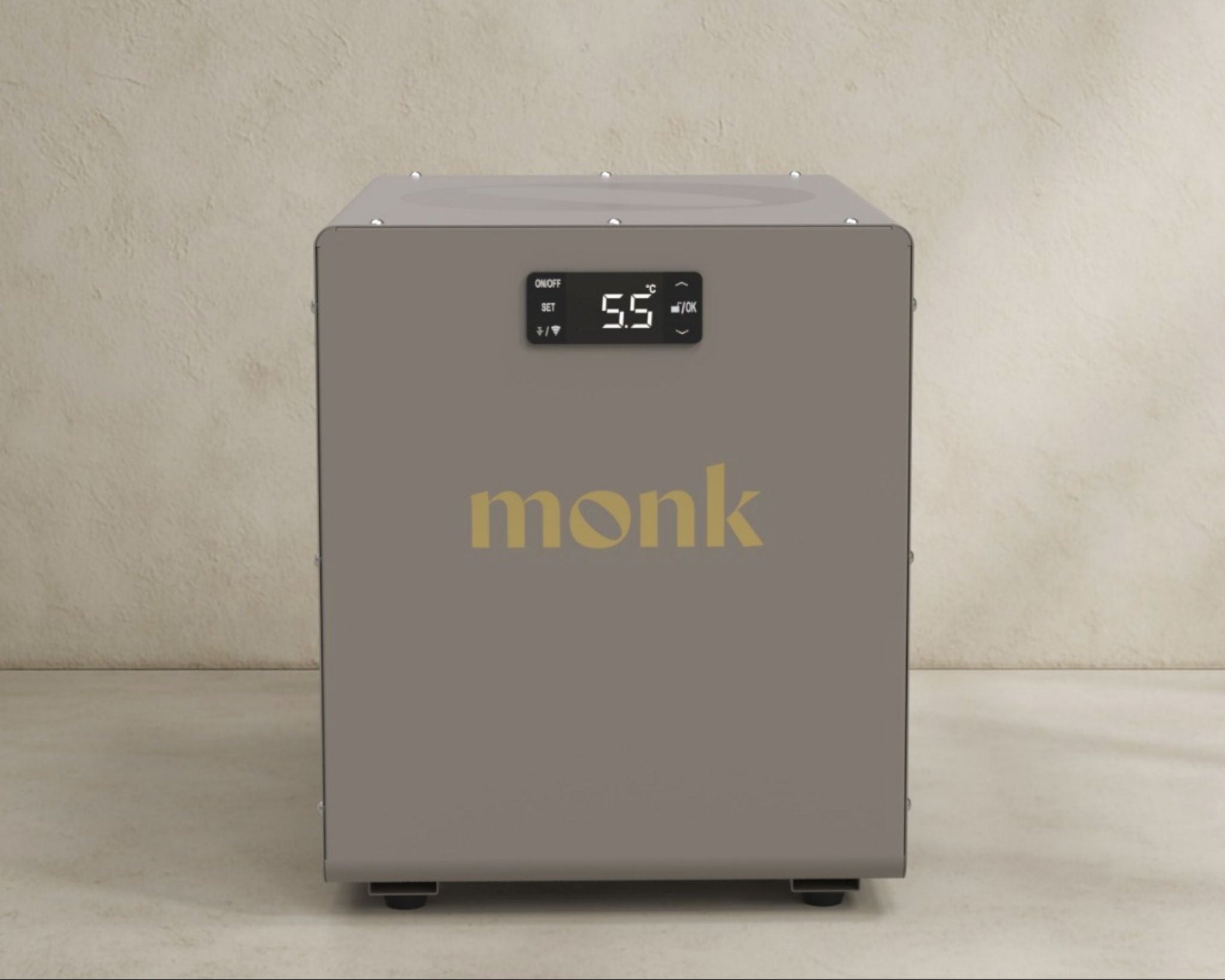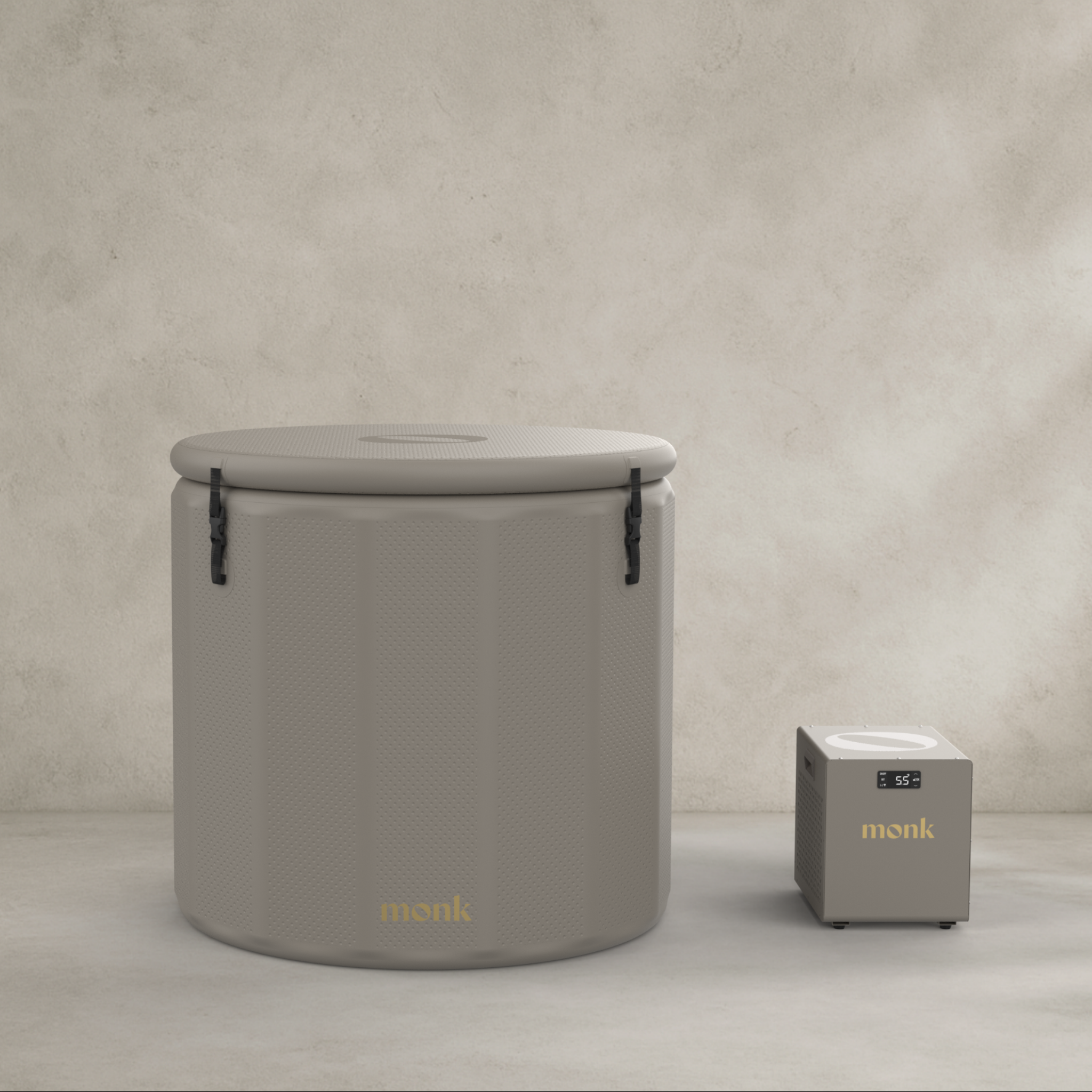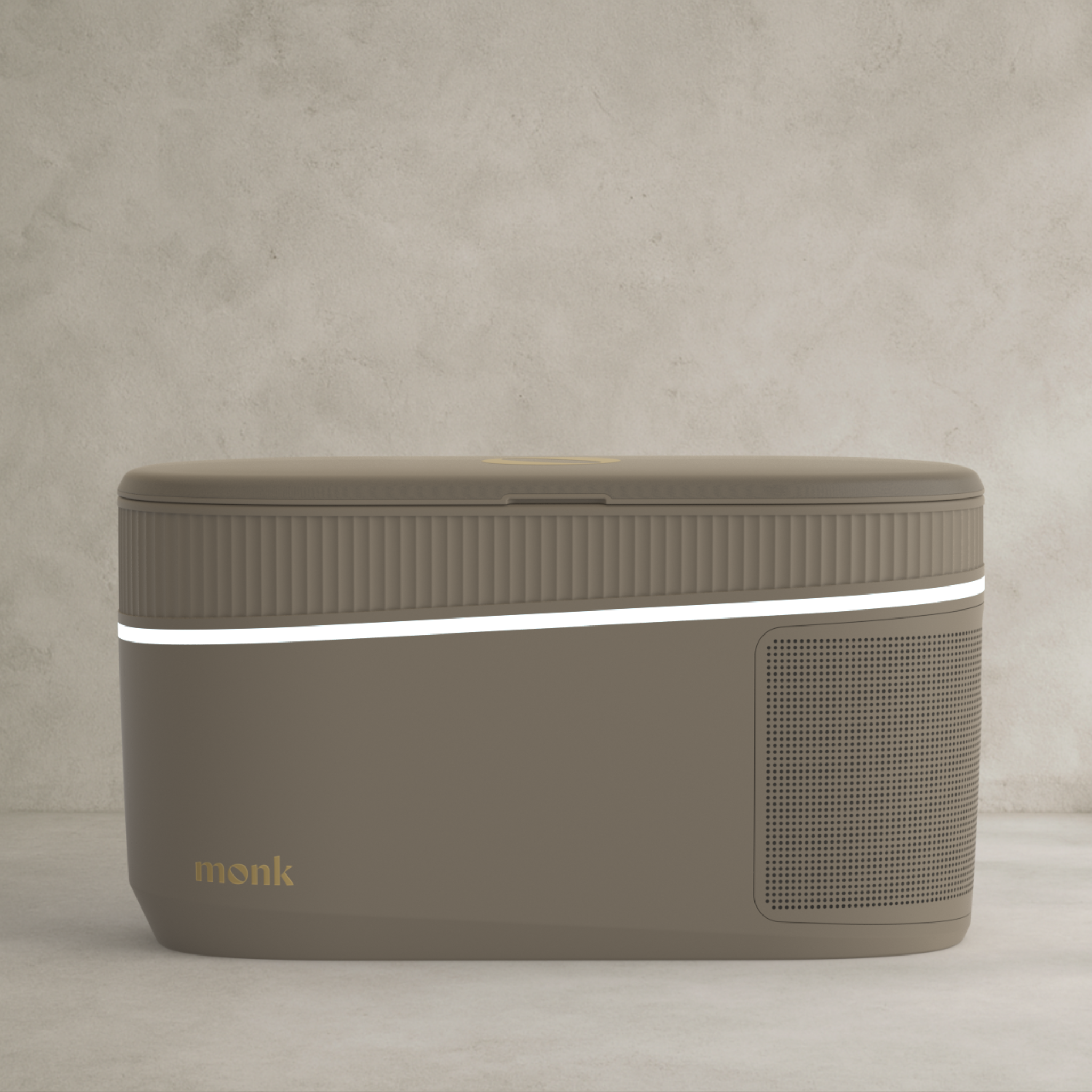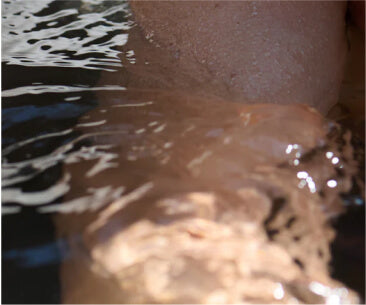The 101 on cold water therapy benefits
It may not feel like it when you lower yourself into that first ice bath and involuntarily belt out the first line of the Lion King theme (just us?), but regularly immersing yourself in cold water is a gift to your body and your mind. Especially in modern life. Research evidencing the positive effects of cold water therapy for our physical, physiological, and psychological health just keeps coming, and its simplicity makes it all the more compelling as a potential prevention and treatment for a host of different health issues. Let’s get into it.
What is cold water therapy?
At its most basic, cold water therapy (CWT) involves intentionally exposing the body to water with a temperature of below 15oc to achieve therapeutic benefits for the body, the mind or both, but there’s different ways you can do it. If you’re curious about just how long CWT has been practised, how people are doing it today, and why not everyone is plunging, we’ve got a round-up of your ‘need-to-knows’ right here.
What are the benefits of cold water therapy?
There’s a reason why you’re seeing more and more cold plunging, ice bathing celebrities and influencers fill up your TikTok and Instagram (and if not, where have you been?!). There are an unbelievable number of benefits for our bodies and our minds from just this simple, ancient practice.
- Muscle Recovery and Performance
- Immunity
- Fat Loss and Metabolism
- Microbiome and Gut Health
- Mindset, Mood and Mental Health
- Neuroprotection
- Pain Management
- Stress Tolerance
Muscle Recovery and Performance
Whether you’re an Olympian or a weekend Park Runner, there’s one acronym that makes us all wince: DOMS. Delayed Onset Muscle Soreness is seemingly the result of your body’s inflammatory response to muscle ‘damage’ after exercise. At its worst, it can feel like muscle sprain, can last up to 72 hours after onset (sometimes longer, gulp), and make certain movements painful and embarrassing… chairs and toilets become enemy #1. Most advice recommends rest and stretching, but if you’re a high performer in any sense of the phrase, this isn’t helpful. Here’s where CWT comes in.
Research has found that when used with precision, CWT can benefit both endurance athletes (runners, cyclists, swimmers, rowers) and resistance athletes (weight lifters, boxers, rugby players) in recovery. This is because cold temperatures restrict blood vessels, and therefore inflammation, and it’s enhanced by a natural pain relief from an increase in noradrenaline, which leaves you with reduced swelling and trauma. A study of rugby players using CWT found decreases in muscle soreness during a 3-week pre-season high-intensity training period, and meta-analysis of multiple studies found the majority of the population would likely feel less of the DOMS burn with CWT. Lower DOMS means faster return to training, and accompanied by faster restoration of the stretch-shortening cycle (which enables greater muscle speed and force) it’s a blueprint for athletic success.
Immunity
Prevention is better than cure. So said Dutch philosopher Erasmus in 1500, and it’s still true today of most modern healthcare. On an individual level it’s also an idea that many tailor their lifestyles around to avoid common illness as well as serious disease, with a laser focus on diet, exercise, sleep and supplements. ‘Ice Man’ Wim Hof stunned researchers when he was able to stave off severe illness symptoms after being injected with an e. coli bacteria, crediting the control he has over his autonomic system from meditation and exposing his body to the cold. Our immune system is central to long, quality life, guarding us against viruses and even tumour factors so immunity is a key focus of cold exposure research, with central heating and modern clothing blamed in part for our compromised defences.
They throw off our immune cells, making them think it’s summer and leading them to lower their guard. But it turns out Wim Hof isn’t the only human able to exert control over their sympathetic nervous system with help from cold water immersion and meditation, as a study from 2014 showed. There’s even evidence that ‘contrast therapy’ (exposure to cold after heat or exercise) significantly increases NK cell and cytotoxic T-cell counts, with both these cells serving as fighters of viruses and cancer. Winter swimmers are also part of science’s fascination with the effects of cold water, with studies showing that they have higher levels of white blood cells at rest, increased antioxidative protection, improved cardiovascular risk factors. With all that time spent in chilly conditions, you might assume they constantly have colds and flu, but data shows they actually have a 40% decreased chance of respiratory tract infections. Much of this is thought to be due to the body’s ‘adaptive response’ to habitual stressors, which has a ‘hardening’ effect to strengthen us against future encounters.
Fat Loss and Metabolism
If you’re trying to lose weight and carve out muscle, fat loss is the focus. But it turns out not all fat is created equal. Science previously believed that adult humans only had “white fat” or White Adipose Tissue (WAT), the main purpose of which is to store energy. Fat is essential for the survival of any mammal, but WAT gets its “bad fat” nickname from increased risk of heart disease, diabetes and other metabolic diseases when it’s in excess. “Brown fat” or Brown Adipose Tissue (BAT) is “good fat” we thought only existed in our newborns and in other mammals. It’s a special connective tissue dedicated to generating heat using a process called non-shivering thermogenesis (NST). In 2009, we were able to prove that adult humans have BAT as well. Like every process in the body, NST uses energy, and BAT gets this by breaking down WAT, our energy stores. While WAT is a natural phenomenon, modern food production, consumption and more sedentary lifestyles mean we’re living with far more of it than we need, reflected in global obesity and Type 2 diabetes rates.
Sustained fat loss isn’t fast, but the science suggests that with CWT, it could get faster. Studies indicate it could take as little as 10 days CWT for your body to recruit more BAT (therefore burning more calories at rest) and increase your metabolic rate 350%. There’s also research to suggest that cold exposure can drive our bodies to create more BAT instead of white fat, leaving us with more of the productive stuff in the first place. We’re also better at metabolising glucose (great news for a sweet tooth) and our cardiometabolic health is better, meaning less risk of Type 2 diabetes, hypertension, coronary artery disease and congestive heart failure. Brilliant BAT aside, a study of winter swimmers also demonstrated increased insulin sensitivity and decreased insulin concentration with regular cold water baths, indicating the possibility of CWT as a prevention strategy for Type 2 Diabetes.
Microbiome and Gut Health
Our microbiome is the total ‘community’ of mostly bacteria, but also viruses, archaea and fungi, that live on and inside our bodies. Some of these microbes have the potential to be harmful, but when our microbiome is in balance, the majority help our bodies function, particularly those located in our gut. Far from just digesting what we feed ourselves, we now know that our gut health impacts metabolism, nutrient absorption, insulin secretion and food intake and the appearance and health of our skin, and an imbalance in our gut can lead to symptoms of anxiety and depression and insomnia. This is because our gut is the largest endocrine organ in the body, with over 50 hormone genes compared to just 2 in the thyroid. With 86% of people in the UK reporting gastrointestinal issues, it’s possible that many of our other health issues start with us being sick to our stomach.
In multiple studies on mice, cold exposure led to an alteration of their gut microbiota (populations of microbes) to help activate non-shivering thermogenesis (NST - we’ve explained what this is and its role in Fat Loss and Metabolism in the section above). It does this by increasing the uptake of carbohydrates and lipoprotein-derived triglycerides. The opposite was also found to be true, with impaired NST observed in mice with impaired gut microbiota, along with decreased insulin sensitivity. While similar studies in humans are yet to be published, it’s possible that cold water therapy can positively impact our microbiota, and help us reap the many benefits of a balanced and healthy gut.
Mindset, Mood and Mental Health
We’re more focused than ever on taking care of our brains as well as our bodies, and for good reason. Depression is the most prevalent mental health disorder in the world, as well as the most disabling. 40% of us suffer from sleep issues leading to low mood and anxiety. Our attention is being bombarded with 74GB of information a day, which is equivalent to the amount of information highly educated humans were exposed to across their lifetime just 500 years ago (not long in evolutionary terms). It’s no wonder so many of us feel overwhelmed. Treatments like talking therapy and medication can work brilliantly for some, but there are faster and non-pharmaceutical alternatives. Many have turned to these methods, with cold water therapy among them.
Neurotransmitters dopamine and noradrenaline are key players in our mental function: dopamine gives us feelings of reward and motivation, whereas noradrenaline contributes to our capacity for attention and focus as well as regulating mood and sleep. Combined, they fire across trillions of synapses to ignite trillions more cells in our body and make us feel euphoric, empowered and razor sharp. Cold water immersion has been shown to increase levels of noradrenaline by 530% and dopamine by 250%, the positive effects of which have also been shown in studies of swimmers who reported improvements to their sleep quality as well as reduced tension and fatigue and improved mood and memory with winter swimming. Noradrenaline in particular has several studies demonstrating its increase with exposure to cold water, suggesting that our productivity levels could reap huge rewards from cold plunging. Depression is also being specifically targeted as a condition that could benefit from cold-water-induced noradrenaline boosts, with successful symptom treatment in small scale study. With the reality of treatment-resistant depression patients being recognised as having significantly unmet needs by current treatment pathways in Europe, CWT can be a game-changer.
Neuroprotection
Neuroprotection isn’t a familiar concept to many, but its importance is growing rapidly. It refers to the prevention of ‘cell death’ in the brain, mainly in reference to our synapses, the vital communication channels for our neurons and essential to forming and storing memory as well as coordinating movement and controlling the functions of our body. Painful as it sounds, cell death is a natural part of human life, but rates of dementia, along with age-related neurodegenerative diseases like Alzheimer’s and Parkinson’s are increasing as many populations age. Traumatic brain injury is also the most common cause of death under 40 years in the UK. There are currently no cures for these conditions, because the underlying mechanisms aren’t completely understood. We do know it often involves neuronal cell death and loss of synapses, the connections between neurons.
The body has numerous ways to protect itself, including on a cellular level. ‘Cold shock proteins’ are one of them, shielding cells from potential damage. Cold shock proteins are so-called because they’ve been proven to spike significantly when an organism is exposed to cold. One cold shock protein exciting researchers of brain injury and neurodegenerative diseases is RBM3, shown to protect neurons and promote the proliferation of neural stem cells, which are cells with the capacity to form new neurons. The implication is that by using techniques which stimulate cold shock proteins, like CWT, we could further slow down or even reverse damage in the brain caused by ageing, disease or traumatic injury via neurogenesis, the formation of new neurons. This is made even more promising by results of animal studies which show this to be possible.
Pain Management
Pain is an affecting but inevitable part of existence. For some, it’s more than a fleeting experience. More than 8 million people in the UK are said to live with chronic pain, which is pain that persists for longer than 12 weeks despite medication or treatment. On top of that, painkiller misuse and addiction is reportedly rife but underserved by our healthcare systems. Persistent pain can come about for a variety of reasons, due to conditions like fibromyalgia and rheumatisms like arthritis as well as post-surgical recovery and psychogenic pain, an experience that modern medicine struggles to address because the biological mechanisms aren’t clear. But there’s new hope from individual testimony and cold water research.
Wim Hof has been vocal about how cold exposure, meditation and breathing practices have allowed him to have total control over feelings of pain, and has even submitted himself to science to measure this phenomenon. He’s joined by less known advocates like the 28-year old triathlete who reported total and lasting relief from his agonising post-surgical pain after returning to the open water. These cases are backed further by research into winter swimmers that reported relief from their rheumatism, fibromyalgia and asthma related pain, most likely a result of noradrenaline release which can be increased 3-fold and sustained for 12 weeks following cold water immersion. In patients with arthritis, an inflammatory degenerative joint disorder which causes pain and inhibits mobility, cold exposure has been shown to significantly reduce pain scores, improve fatigue and mobility, reduce inflammatory signalling molecules and increase anti-inflammatory molecules (thereby reducing inflammation). For some, the pain-relieving revelations of cold water therapy for truly debilitating conditions have already been life changing.
Monk’s mission
Our mission is to make cold water therapy evidence-based, and prove through data, at scale, this this is a practice worth everyone’s attention. We’re setting out to create world-first personalised protocols that teach people how to use CWT safely and effectively.







